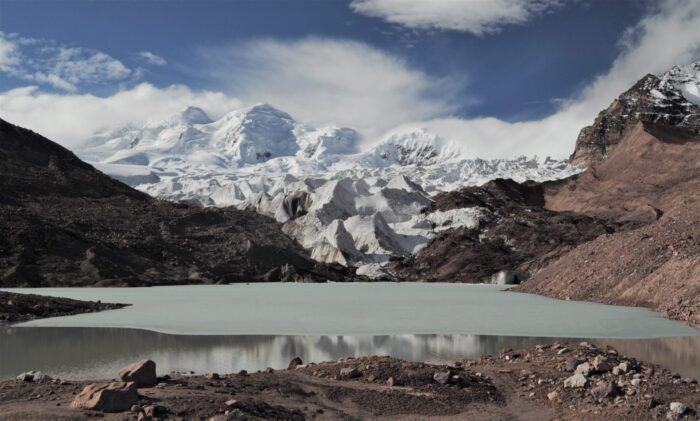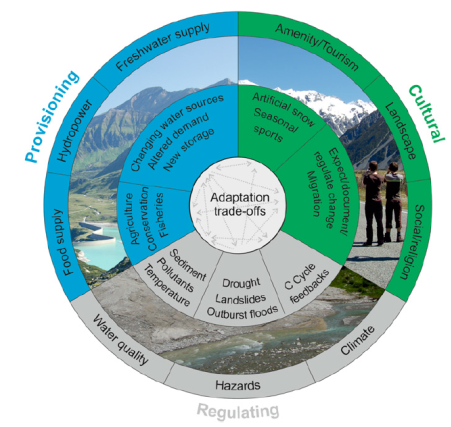About

Glaciers cover ~10% of Earth’s surface, but they are losing mass at unprecedented rates worldwide. We are already seeing widespread changes to the ecosystem benefits that glacier-fed rivers provide to billions of humans (Figure 1). In particular, water provision for agriculture, hydropower, and consumption is being altered by changes in the amount of meltwater and the timing of peak melt. Alterations to water temperature, glacial sediment production and flow regimes are driving modifications to ecosystems and biodiversity, whilst at the same time increasing the likelihood of hazards and unexpected feedbacks to global climate. Human populations will also need to adapt to landscape changes such as for tourism or where ice masses inform religious beliefs. Adaptation and mitigation measures are needed urgently taking into account the full breadth of impacts and their interactions.
Researchers here at the University of Leeds work at the forefront of this global challenge. Working in collaboration with a wide range of non-academic organisations internationally, we provide leadership in understanding how and why mountain and polar regions are deglaciating, and we work to advance a range of strategies for societal adaptation.

The effects of glacier shrinkage influence a range of ecosystem benefits (outer ring, grouped as Provisioning, Regulating and Cultural services). The inner ring highlights specific responses that occur as glaciers retreat and disappear. The centre draws attention not the complexity of interactions amongst the various benefits, necessitating trade-offs as society adapts (source: Milner et al. 2017)
